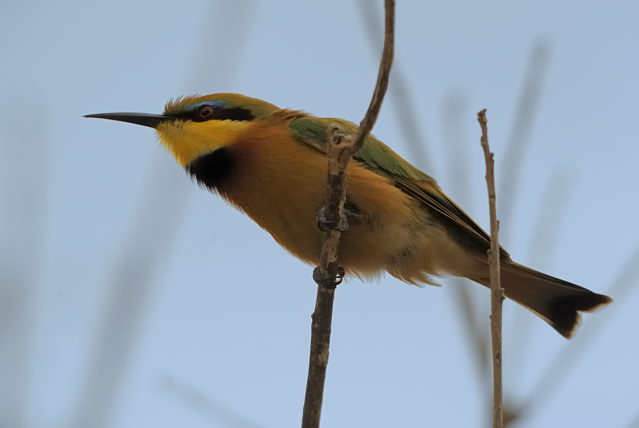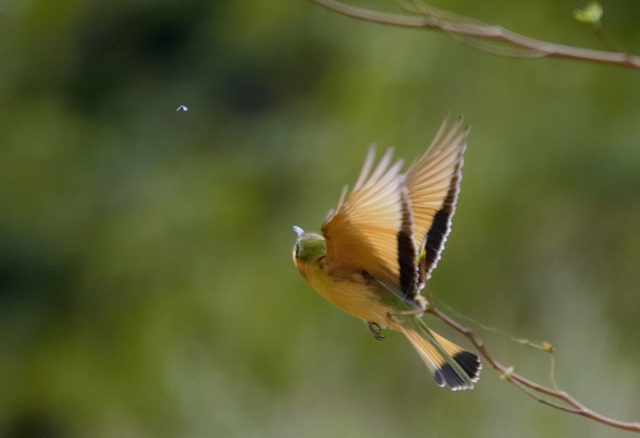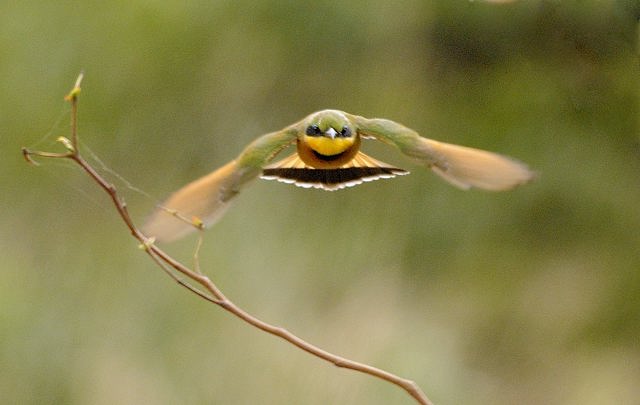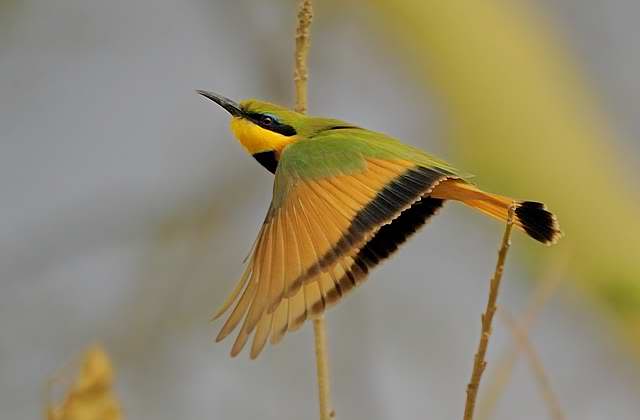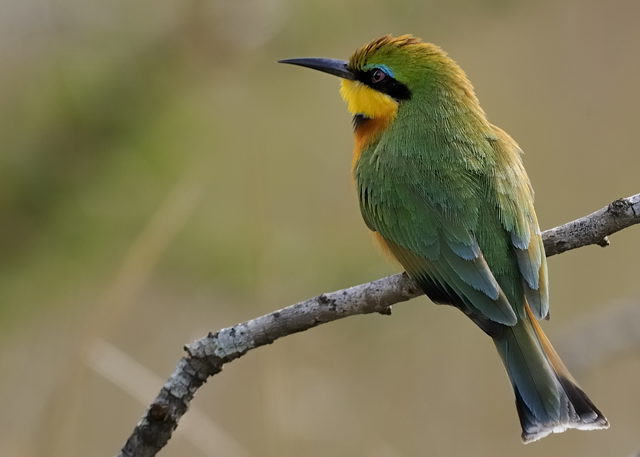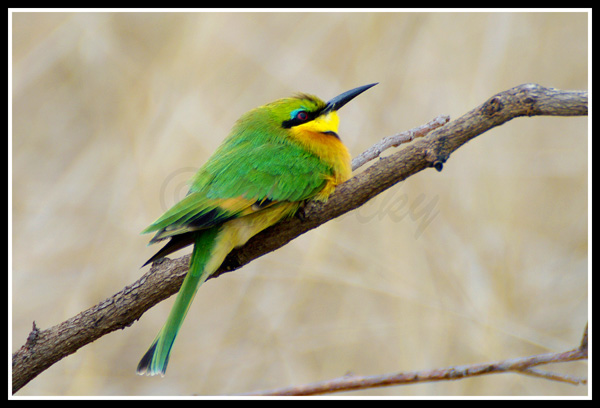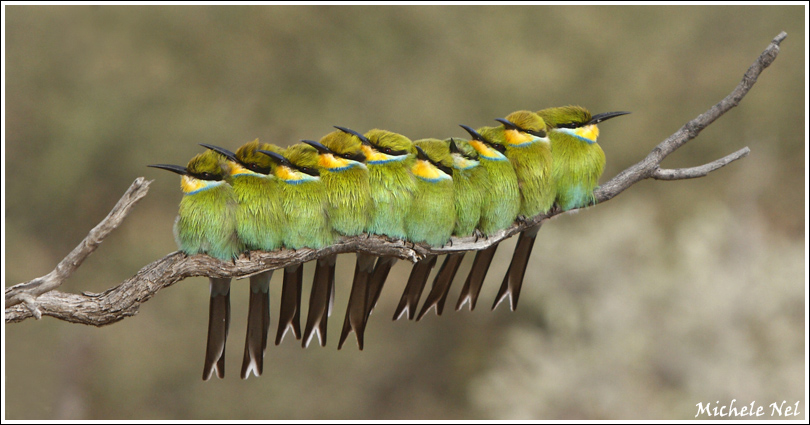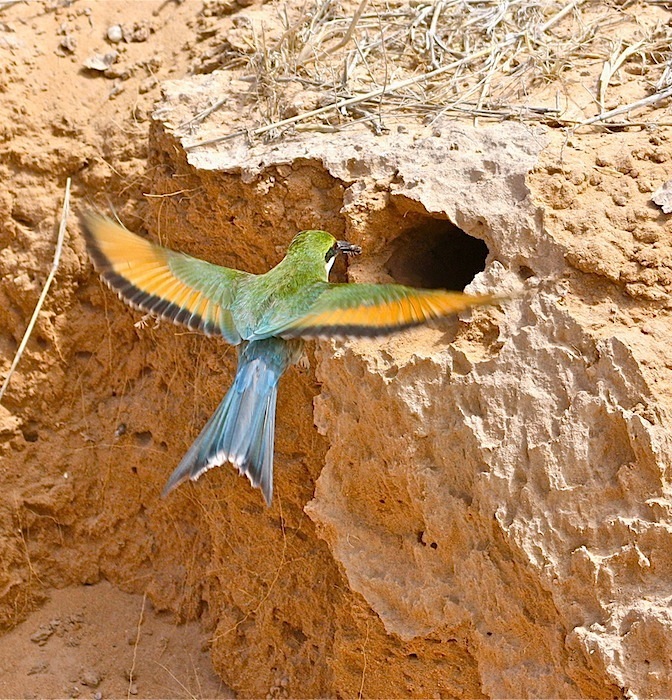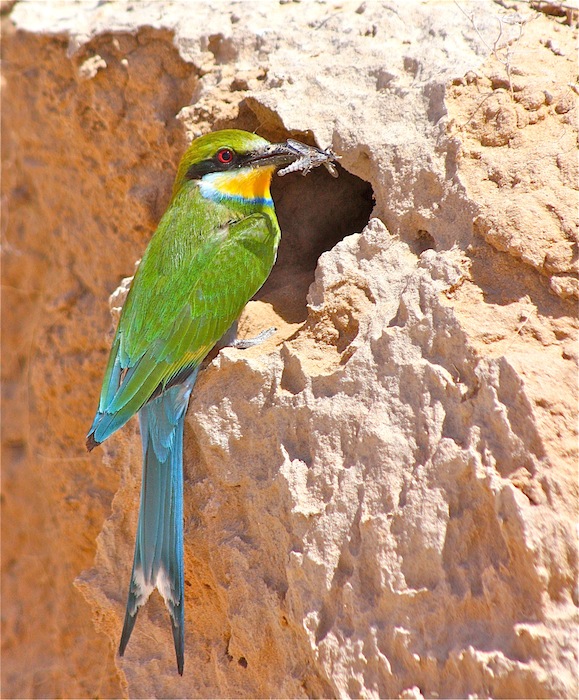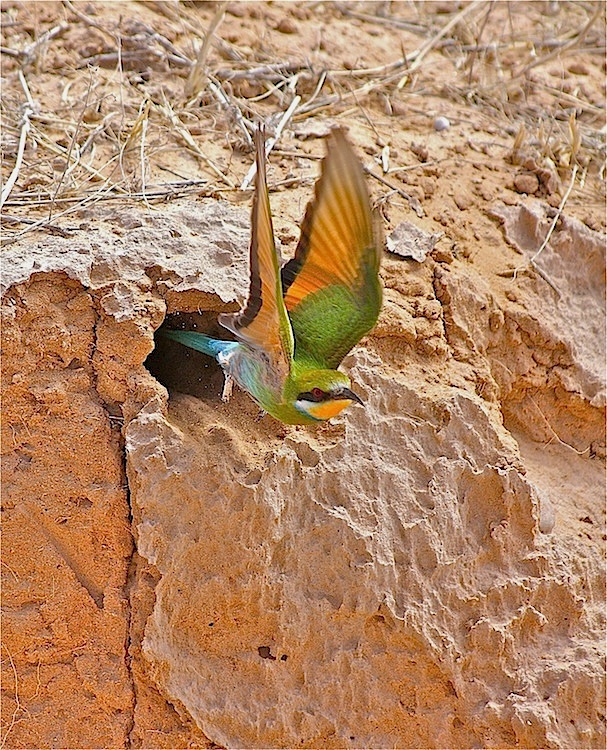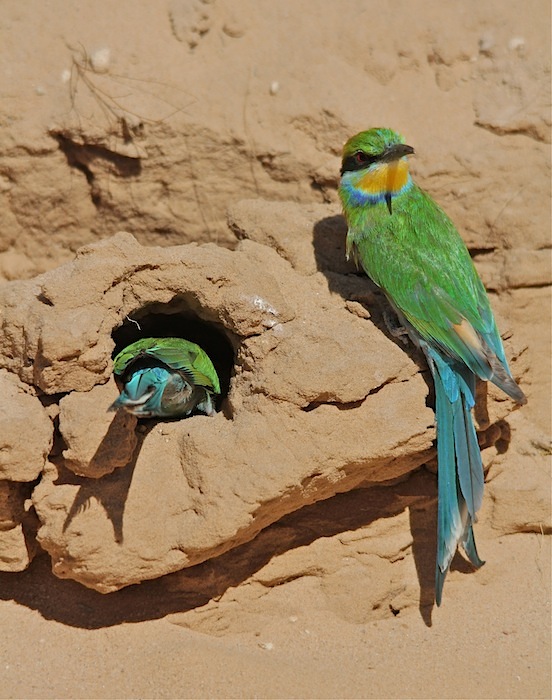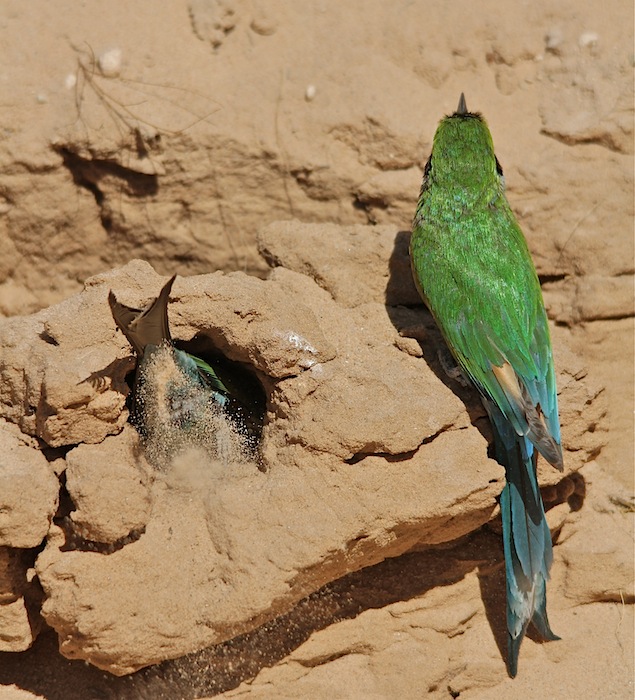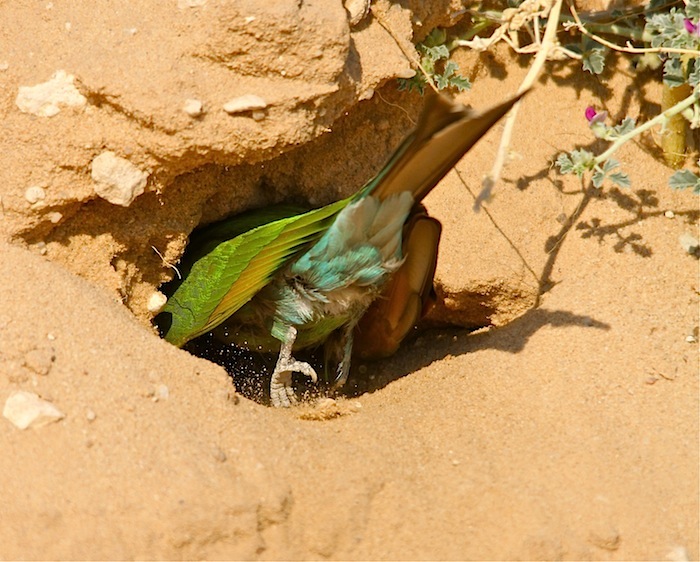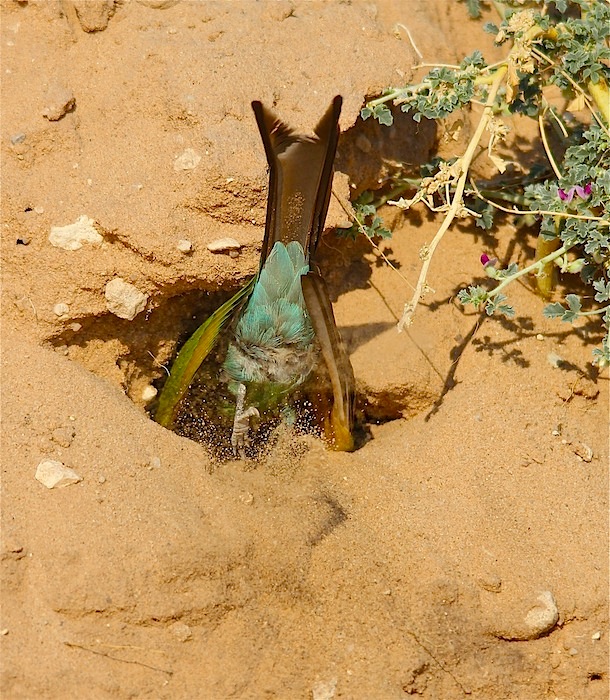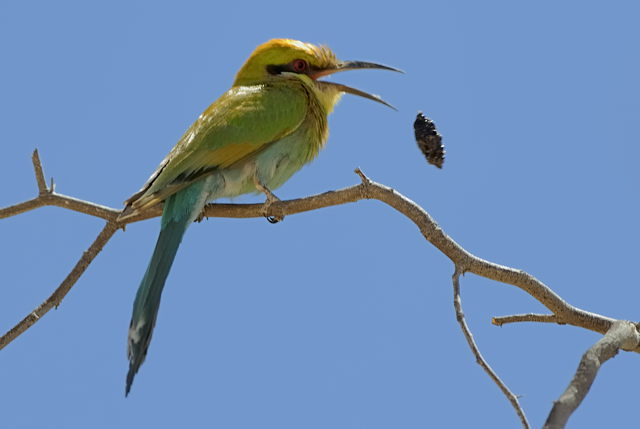445. Swallow-tailed Bee-eater Merops hirundineus (Swaelstertbyvreter)
Description
This species, like other bee-eaters, is a richly colored, slender bird. Its colours and readily visible forked tail make this species unmistakable. It is mainly green with a yellow face and a black eye stripe. The head is coloured bronze, the bill is coloured black. It has a yellow coloured throat, black legs and a bronze, green coloured back. The eyes are orange. It can reach a length of 20–22 cm, including the long forked green or blue feathers. It weighs around 23 gms. Sexes are alike.
Distribution and habitat
Occurs in sub-Saharan Africa, excluding the equatorial forest belt; in southern Africa it is locally common in Namibia, Botswana, Zimbabwe, Mozambique and northern South Africa. It generally prefers tall savanna woodlands, with trees such as Zambezi teak (
Baikiaea plurijuga), Burkea (
Burkea africana), miombo (
Brachystegia), bushwillows (
Combretum) and Mopane (
Colophospermum mopane). It also occasionally moves into Eucalyptus plantations. It is partially migratory, moving in response to rainfall patterns.
There are two subspecies.
M. h. furcatus occurs on the costal plans in Tanzania, north of the Limpopo in Mozambique, in Zambia (Northern Province) and in southeastern Zimbabwe. The nominate supspecies is found in the west, in woodlands in Kalahari sands and along the Orange River.
Food
Exclusively eats insects, especially bees. It usually spots its prey from low perches, rapidly flying at the insect once it has been located. It kills its prey by repeatedly banging it against the perch. If it is venomous, the sting is rubbed against its perch until all the venom has been secreted.
Breeding
Unlike the larger Bee-eaters it is a solitary breeder.
Both sexes excavate the nest, which consists of a short tunnel widening into an egg chamber. It is usually dug into sandbanks or riverbanks (see fig. 3)
Egg-laying season is usually from October-February, peaking from September-November.
It lays 2-4 eggs, at one day intervals.
Very little is known of the chicks, other than they are fed butterflies, bees and wasps by both sexes.
Sources:
biodiversityexplorer,
Avian Web,
Download pdf - Species text in The Atlas of Southern African Birds
